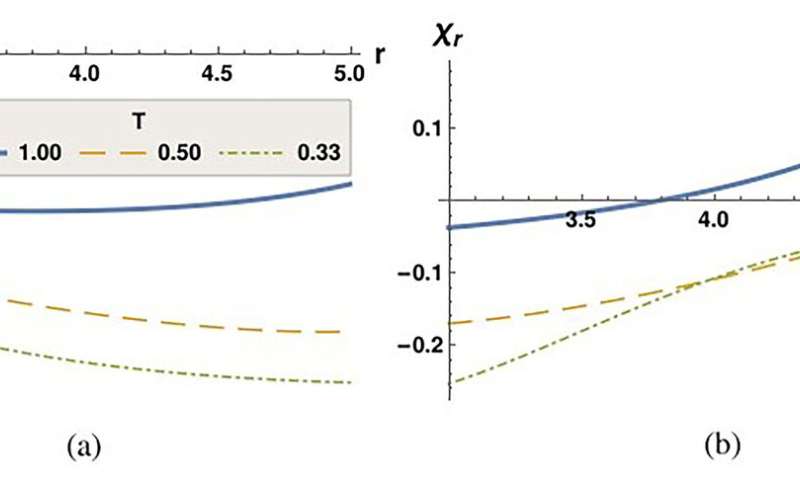
When looking at humanity from a macroscopic perspective, there are numerous examples of people cooperating to form societies, countries, religions, and other groupings.
Yet at the basic two-person level, people tend to betray each other, as found in social dilemma games like the prisoner's dilemma, even though people would receive a better payoff if they cooperated among themselves.
The topic of cooperation and how and when people start trusting one another has been studied by various researchers who have addressed this problem numerically. In a paper in Chaos, researchers investigate what drives cooperation analytically.
In order to investigate what happens when an infinite number of people, instead of two people, play a game like the prisoner's dilemma, the researchers mapped the two-player game to a two-spin ID Ising model, which is a 1D line of interacting spins in the presence of an external magnetic field.
Spins can either point clockwise, which is up, or counterclockwise, which is down. The net difference between the fraction of spins pointing up to those pointing down provides the analytic result for the magnetization.
"Game magnetization is an excellent measure of how in the overall scheme of things the total number of players respond to different payoffs," said Colin Benjamin, one of the authors. "In our work, we go beyond game magnetization and look at game susceptibility, too."
An analytical result for susceptibility probes the net change in the fraction of players adopting a certain strategy for both classic and quantum social dilemmas and pinpoints the real drivers of cooperative behavior, which can vary given the situation.
The findings in this research can be applied to analytical solutions to numerous other social dilemma games, such as rock-paper-scissors, Battle of the Sexes, or Stag Hunt. The mapping to ID Ising model can help understand cooperative behavior in many other social dilemmas as well.
"One future area to explore is that of recent COVID-19 infection dynamics," said Benjamin. "A lot of numerical work has been done to explore COVID-19 infection dynamics using tools of evolutionary game theory. An analytical model, however, is lacking."
Explore further
Citation: Betrayal or cooperation? Analytical investigation of behavior drivers (2020, September 8) retrieved 8 September 2020 from https://ift.tt/2F0qdgB
This document is subject to copyright. Apart from any fair dealing for the purpose of private study or research, no part may be reproduced without the written permission. The content is provided for information purposes only.
"behavior" - Google News
September 08, 2020 at 10:00PM
https://ift.tt/2F0qdgB
Betrayal or cooperation? Analytical investigation of behavior drivers - Phys.org
"behavior" - Google News
https://ift.tt/2We9Kdi
Bagikan Berita Ini














0 Response to "Betrayal or cooperation? Analytical investigation of behavior drivers - Phys.org"
Post a Comment